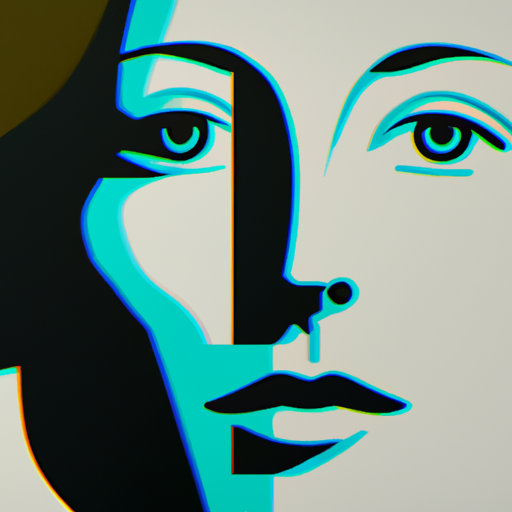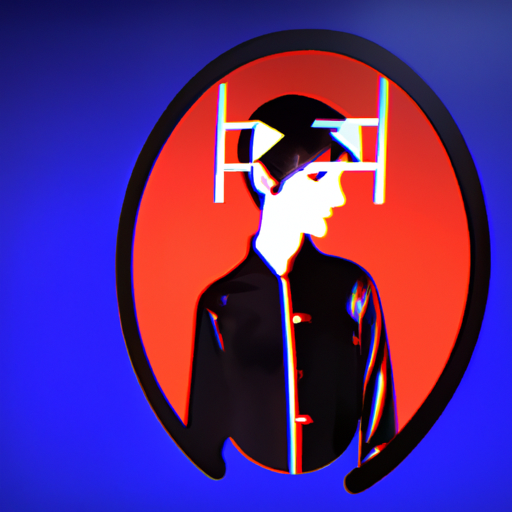
-
Table of Contents
- Exploring Geometric Shapes in Modern Graphic Design
- The Power of Geometric Shapes
- Applications of Geometric Shapes in Graphic Design
- Logo Design
- Typography
- Layout and Composition
- Pattern Design
- Case Studies: Geometric Shapes in Modern Graphic Design
- Apple
- Spotify
- The Impact of Geometric Shapes on Design Aesthetic
- Minimalism
- Modern and Futuristic
- Visual Hierarchy
- Summary
Exploring Geometric Shapes in Modern Graphic Design

Graphic design is a constantly evolving field that draws inspiration from various sources, including nature, art movements, and cultural influences. One of the most prominent design trends in recent years is the use of geometric shapes. Geometric shapes offer designers a versatile and visually appealing tool to create impactful and modern designs. In this article, we will explore the significance of geometric shapes in modern graphic design, their applications, and the impact they have on the overall design aesthetic.
The Power of Geometric Shapes
Geometric shapes, such as squares, circles, triangles, and polygons, have been used in design for centuries. Their appeal lies in their simplicity, symmetry, and ability to convey meaning. These shapes have inherent qualities that make them visually pleasing and easily recognizable. They provide a sense of order, balance, and harmony to a design, making it visually appealing and aesthetically pleasing.
Moreover, geometric shapes have a universal language that transcends cultural and language barriers. They are easily understood and recognized by people from different backgrounds, making them an effective tool for communication. This universality allows designers to convey complex ideas and concepts in a simple and concise manner.
Applications of Geometric Shapes in Graphic Design
The use of geometric shapes in graphic design is widespread and can be seen in various applications. Let’s explore some of the key areas where geometric shapes are commonly used:
Logo Design
Logos are the visual representation of a brand and play a crucial role in creating brand identity. Geometric shapes are often used in logo design to create a strong and memorable visual mark. For example, the Nike logo, known as the “swoosh,” is a simple and iconic representation of motion and speed. The swoosh is a curved line that resembles a checkmark, conveying a sense of movement and progress. This simple geometric shape has become synonymous with the Nike brand.
Typography
Geometric shapes are also used in typography to create visually appealing and modern typefaces. Many typefaces are based on geometric shapes, such as circles and squares, which give them a clean and minimalist look. These typefaces are often used in contemporary design to convey a sense of modernity and simplicity. For example, the typeface used in the Google logo is a geometric sans-serif font called “Product Sans.” The clean lines and geometric shapes of this typeface reflect Google’s brand values of simplicity and innovation.
Layout and Composition
Geometric shapes are widely used in layout and composition to create visually balanced and harmonious designs. Designers often use grids and geometric shapes as a framework to organize elements on a page. This approach helps create a sense of order and structure, making the design visually appealing and easy to navigate. For example, the use of a grid system in magazine design allows for consistent spacing and alignment of text and images, resulting in a cohesive and visually pleasing layout.
Pattern Design
Geometric shapes are frequently used in pattern design to create visually striking and repetitive motifs. Patterns created using geometric shapes can be found in various design applications, such as textiles, wallpapers, and packaging. These patterns add visual interest and create a sense of rhythm and movement. For example, the iconic Burberry check pattern is composed of intersecting lines and squares, creating a visually appealing and recognizable design.
Case Studies: Geometric Shapes in Modern Graphic Design
Let’s take a closer look at some real-world examples of how geometric shapes have been used in modern graphic design:
Apple
Apple is known for its sleek and minimalist design aesthetic, which often incorporates geometric shapes. The company’s logo, a simple apple silhouette with a bite taken out of it, is a prime example of the use of geometric shapes in logo design. The shape of the apple is a perfect circle, conveying a sense of simplicity and perfection. This iconic logo has become synonymous with Apple’s brand identity and is instantly recognizable worldwide.
Spotify
Spotify, a popular music streaming platform, uses geometric shapes in its branding and interface design. The company’s logo consists of three curved lines forming a circle, resembling sound waves. This geometric representation of sound conveys the essence of the brand and its focus on music. Additionally, Spotify’s interface design incorporates geometric shapes to create a visually appealing and user-friendly experience.
Instagram, a social media platform focused on visual content, utilizes geometric shapes in its logo and app design. The company’s logo is a simple camera icon composed of a square with rounded corners and a circle in the center. This geometric representation of a camera reflects the platform’s emphasis on photography and visual storytelling. Furthermore, Instagram’s app design incorporates geometric shapes to create a clean and intuitive user interface.
The Impact of Geometric Shapes on Design Aesthetic
The use of geometric shapes in modern graphic design has had a significant impact on the overall design aesthetic. Here are some key ways in which geometric shapes influence design:
Minimalism
Geometric shapes are often associated with minimalism, a design style characterized by simplicity and clean lines. The use of geometric shapes in design allows for a reduction of unnecessary elements, resulting in a visually uncluttered and focused design. Minimalist design has gained popularity in recent years due to its ability to convey a sense of elegance and sophistication.
Modern and Futuristic
Geometric shapes are inherently modern and futuristic, making them a popular choice in contemporary design. The clean lines and symmetrical compositions created by geometric shapes evoke a sense of technological advancement and innovation. This aesthetic is often used in industries such as technology, fashion, and architecture to convey a sense of cutting-edge design.
Visual Hierarchy
Geometric shapes can be used to establish a visual hierarchy within a design. By varying the size, color, and placement of geometric shapes, designers can guide the viewer’s attention and create a sense of importance. For example, a large and brightly colored geometric shape may draw the viewer’s attention, while smaller shapes may serve as supporting elements.
Summary
Geometric shapes play a significant role in modern graphic design. Their simplicity, universality, and visual appeal make them a versatile tool for designers. Geometric shapes are used in various applications, including logo design, typography, layout and composition, and pattern design. Real-world examples, such as Apple, Spotify, and Instagram, demonstrate the effective use of geometric shapes in creating memorable and impactful designs. The use of geometric shapes has influenced the design aesthetic, contributing to the rise of minimalism, modernity, and visual hierarchy in contemporary design. As graphic design continues to evolve, geometric shapes will undoubtedly remain a powerful and timeless element in the designer’s toolkit.
